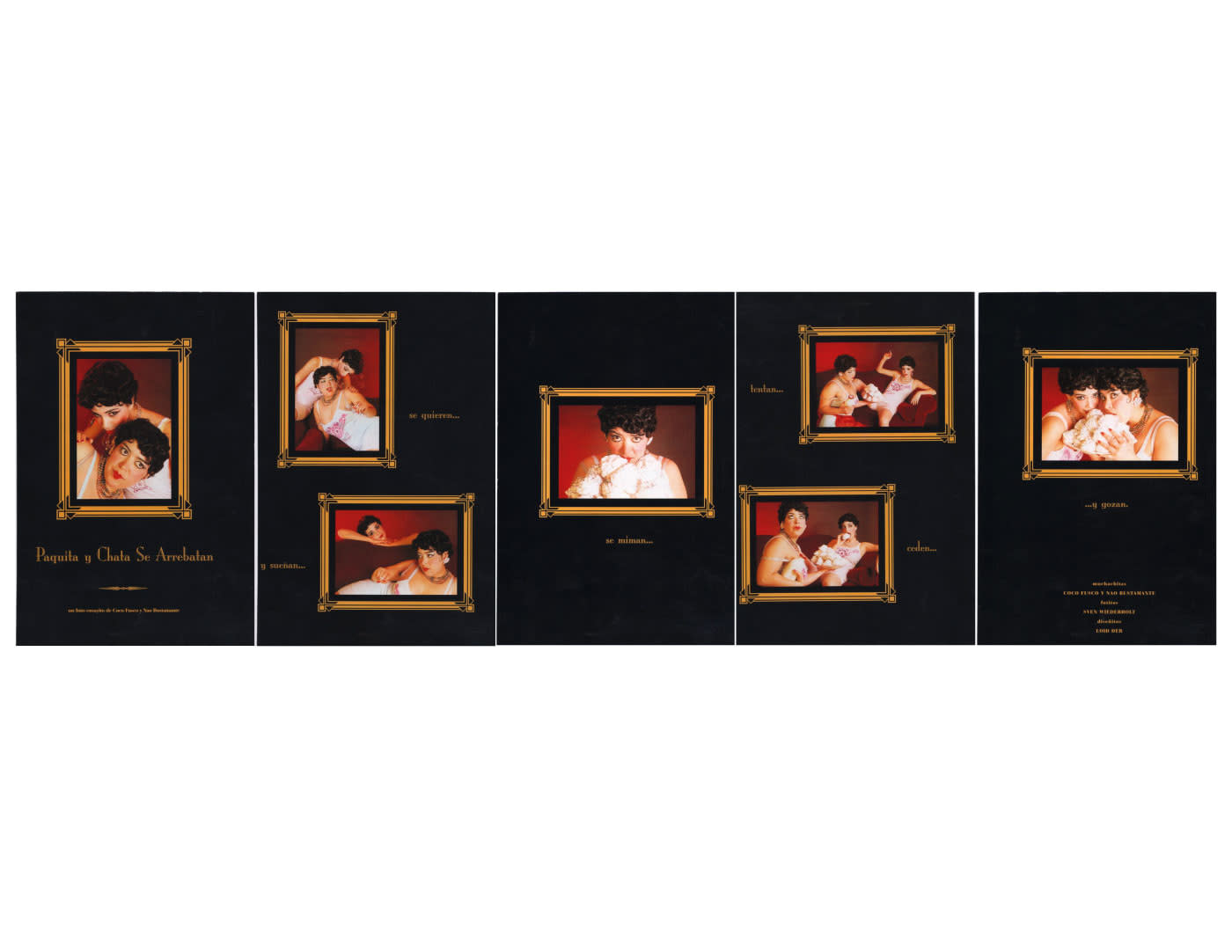Coco Fusco
Paquita y Chata se arrebatan, 1996
photo printing on cotton paper (polyptych)
impressão sobre papel algodão (políptico)
impressão sobre papel algodão (políptico)
40 x 27 cm (3 photos)
15 3/4 x 10 5/8 in
24 x 35.5 cm (4 photos)
9 1/2 x 14 in
15 3/4 x 10 5/8 in
24 x 35.5 cm (4 photos)
9 1/2 x 14 in
Mais imagens
Paquita y Chata was originally produced for Atlantica Magazine as a kind of fotonovela in 1997. This is a collaboration with artist Nao Bustamante. 'At the time, we were touring...
Paquita y Chata was originally produced for Atlantica Magazine as a kind of fotonovela in 1997. This is a collaboration with artist Nao Bustamante.
"At the time, we were touring with a performance about the stereotypes projected onto Latin American women: as earth mothers on the one hand and hypersexual on the other. In the photos we are dressed as Mexican Lupita dolls. These dolls are sold all over the world as Mexican folk art. They were originally made by less affluent Mexicans as substitutes for porcelain dolls. We were interested in their connection with female sexuality. According to popular legend, they were bought by wives who suspected that their husbands were cheating on them, and the wives would write the name of the mistress on the doll to let the husband know they knew. Another story is that they were used in the past to advertise brothels in Mexico City with each doll representing a prostitute."
"At the time, we were touring with a performance about the stereotypes projected onto Latin American women: as earth mothers on the one hand and hypersexual on the other. In the photos we are dressed as Mexican Lupita dolls. These dolls are sold all over the world as Mexican folk art. They were originally made by less affluent Mexicans as substitutes for porcelain dolls. We were interested in their connection with female sexuality. According to popular legend, they were bought by wives who suspected that their husbands were cheating on them, and the wives would write the name of the mistress on the doll to let the husband know they knew. Another story is that they were used in the past to advertise brothels in Mexico City with each doll representing a prostitute."
Assine nossa newsletter
Campos Requeridos
We will process the personal data you have supplied to communicate with you in accordance with our Política de Privacidade. Você pode cancelar a assinatura ou alterar suas preferências a qualquer momento, clicando no link em nossos e-mails.





